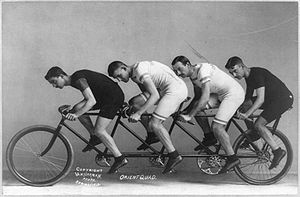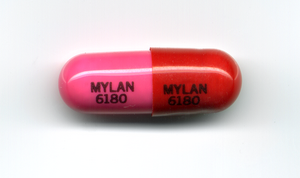 Image by Cornell University Library via Flickr
Image by Cornell University Library via FlickrYesterday I finally touched base with my best friend and learned that she is currently participating in a boot camp style exercise program. She described for me in detail what her workouts look like and how much fun she is having doing them. She admits that exercise has never really been her thing, but this whole boot camp approach has recently changed her mindset on exercise.
Then she told me how sore she was from today's workout and said, "I bet this is how you feel all the time."
I certainly appreciated her empathy, but I have to admit that her description of her current exercise program made me 1) feel like a big, fat slug and 2) realize that I live in an entirely different world than she does.
Exercise has always been a part of my life since I was a kid. I can remember dance lessons, bike riding around our local park, hiking and backpacking as a Girl Scout and years spent as a member of the local YMCA swim team. In high school, I was my mother's companion at the gym, riding my bike to meet her there and then taking aerobics classes and working out on the weight machines.
Exercise became even more important to me when I was diagnosed with type 2 diabetes in 1999. I discovered just how powerful it was in helping to maintain tight control over my blood glucose number. I also discovered the elliptical machine at the gym, which quickly became my new favorite piece of exercise equipment.
The irony has not escaped me that my entrée into life with fibromyalgia was a trip-and-fall accident that occurred while I was taking a brisk walk around the building while on a break at work.
While I have been exploring exercise in my blog posts during this past month, I have learned that I need to work on my acceptance of how fibromyalgia has completed and totally changed what exercise looks like for me now. I can more clearly see that my expectations about what I should be able to do are a complete mismatch with what my body can do. I can hear that tiny, critical voice inside my head saying, "You can only do three minutes of exercise, three time a week?!?" Yeah, that little, judgmental voice needs a reality check.
But I also understand: that voice is the part of me that misses being busy getting things done. It's really hard for me to be home all day and unable to get done all the things I need and want to do because I lack the physical energy to do so. It's those physical limitations, the by-product of living with chronic and disabling pain and fatigue 24/7/365, that are the hardest part of my current health situation.
I think spending this past month adjusting my attitude towards exercise will help me be more successful with my current endeavor to implement the exercise advice I got last month from my new neurologist.
To that end, I am pleased to report that I am slowly building up the number of reps and number of exercises I do on a daily basis from the Exercises to Help Manage Orthostatic Hyptension handout. I light of my recent diagnosis of Postural Orthostatic Tachycardia Syndrome (POTS), I am putting together the money to purchase a recumbent bicycle, since it is now clear to me I need to engage in seated exercise. Perhaps I can get a good quality used one from a second hand exercise equipment store.
I am also practicing more patience and understanding with my body. After all, it is doing the best it can despite all my health challenges.
So you see, like my best friend, I am working on changing my mindset when it comes to exercise.
























![YUCK snow in MinneSNOWta[Day338]*](http://farm3.static.flickr.com/2364/2087121094_3a962800fe_m.jpg)








